Related Research Articles
In the psychology subfield of oneirology, a lucid dream is a type of dream wherein the dreamer realizes that they are dreaming during their dream. The capacity to have lucid dreams is a trainable cognitive skill. During a lucid dream, the dreamer may gain some amount of volitional control over the dream characters, narrative, or environment, although this control of dream content is not the salient feature of lucid dreaming. An important distinction is that lucid dreaming is a distinct type of dream from other types of dreams such as prelucid dreams and vivid dreams, although prelucid dreams are a precursor to lucid dreams, and lucid dreams are often accompanied with enhanced dream vividness. Lucid dreams are also distinct state from other lucid boundary sleep states such as lucid hypnagogia or lucid hypnopompia.

Sleep is a state of reduced mental and physical activity in which consciousness is altered and certain sensory activity is inhibited. During sleep, there is a marked decrease in muscle activity and interactions with the surrounding environment. While sleep differs from wakefulness in terms of the ability to react to stimuli, it still involves active brain patterns, making it more reactive than a coma or disorders of consciousness.
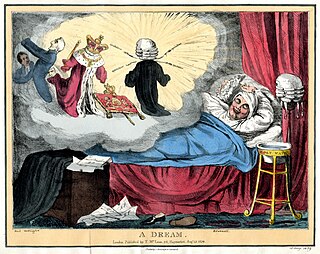
A dream is a succession of images, ideas, emotions, and sensations that usually occur involuntarily in the mind during certain stages of sleep. Humans spend about two hours dreaming per night, and each dream lasts around 5–20 minutes, although the dreamer may perceive the dream as being much longer than this.
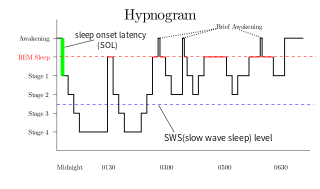
Rapid eye movement sleep is a unique phase of sleep in mammals and birds, characterized by random rapid movement of the eyes, accompanied by low muscle tone throughout the body, and the propensity of the sleeper to dream vividly.

Rapid eye movement sleep behavior disorder or REM sleep behavior disorder (RBD) is a sleep disorder in which people act out their dreams. It involves abnormal behavior during the sleep phase with rapid eye movement (REM) sleep. The major feature of RBD is loss of muscle atonia during otherwise intact REM sleep. The loss of motor inhibition leads to sleep behaviors ranging from simple limb twitches to more complex integrated movements that can be violent or result in injury to either the individual or their bedmates.
Non-rapid eye movement sleep (NREM), also known as quiescent sleep, is, collectively, sleep stages 1–3, previously known as stages 1–4. Rapid eye movement sleep (REM) is not included. There are distinct electroencephalographic and other characteristics seen in each stage. Unlike REM sleep, there is usually little or no eye movement during these stages. Dreaming occurs during both sleep states, and muscles are not paralyzed as in REM sleep. People who do not go through the sleeping stages properly get stuck in NREM sleep, and because muscles are not paralyzed a person may be able to sleepwalk. According to studies, the mental activity that takes place during NREM sleep is believed to be thought-like, whereas REM sleep includes hallucinatory and bizarre content. NREM sleep is characteristic of dreamer-initiated friendliness, compared to REM sleep where it is more aggressive, implying that NREM is in charge of simulating friendly interactions. The mental activity that occurs in NREM and REM sleep is a result of two different mind generators, which also explains the difference in mental activity. In addition, there is a parasympathetic dominance during NREM. The reported differences between the REM and NREM activity are believed to arise from differences in the memory stages that occur during the two types of sleep.
Hypnagogia is the transitional state from wakefulness to sleep, also defined as the waning state of consciousness during the onset of sleep. Its opposite state is described as hypnopompia – the transitional state from sleep into wakefulness. Mental phenomena that may occur during this "threshold consciousness" phase include hypnagogic hallucinations, lucid dreaming, and sleep paralysis.

In the field of psychology, the subfield of oneirology is the scientific study of dreams. Research seeks correlations between dreaming and knowledge about the functions of the brain, as well as an understanding of how the brain works during dreaming as pertains to memory formation and mental disorders. The study of oneirology can be distinguished from dream interpretation in that the aim is to quantitatively study the process of dreams instead of analyzing the meaning behind them.
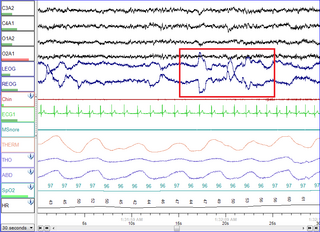
Polysomnography (PSG) is a multi-parameter type of sleep study and a diagnostic tool in sleep medicine. The test result is called a polysomnogram, also abbreviated PSG. The name is derived from Greek and Latin roots: the Greek πολύς, the Latin somnus ("sleep"), and the Greek γράφειν.

Remember... Dreams Come True was a Disneyland fireworks display commemorating the 50th anniversary of the park in 2005 and 2006. The show featured fireworks, lower level pyrotechnics, isobar flame effects, projection mapping, lasers, searchlights, and lighting set to the soundtracks of some of Disneyland's rides and shows.
Yumemi Kōbō is a device sold by the Japanese company Takara Toys that is claimed to be able to induce lucid dreams.
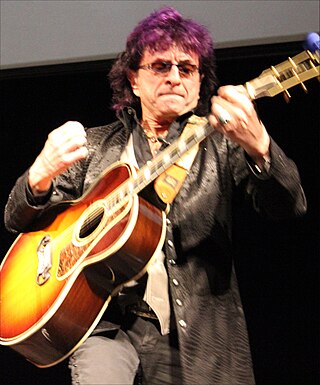
James Michael Peterik is an American musician and songwriter. He is best known as the founder of the rock band Survivor, as vocalist and guitarist in The Ides of March, and as co-writer of the anthem "Eye of the Tiger", the theme from the 1982 film Rocky III.
Nathaniel Kleitman was an American physiologist and sleep researcher who served as Professor Emeritus in Physiology at the University of Chicago. He is recognized as the father of modern sleep research, and is the author of the seminal 1939 book Sleep and Wakefulness.
Stephen LaBerge is an American psychophysiologist specializing in the scientific study of lucid dreaming. In 1967 he received his bachelor's degree in mathematics. He began researching lucid dreaming for his Ph.D. in psychophysiology at Stanford University, which he received in 1980. He developed techniques to enable himself and other researchers to enter a lucid dream state at will, most notably the MILD technique, which was used in many forms of dream experimentation. In 1987, he founded The Lucidity Institute, an organization that promotes research into lucid dreaming, as well as running courses for the general public on how to achieve a lucid dream.
Scholarly interest in the process and functions of dreaming has been present since Sigmund Freud's interpretations in the 1900s. The neurology of dreaming has remained misunderstood until recent distinctions, however. The information available via modern techniques of brain imaging has provided new bases for the study of the dreaming brain. The bounds that such technology has afforded has created an understanding of dreaming that seems ever-changing; even now questions still remain as to the function and content of dreams.
REM rebound is the lengthening and increasing frequency and depth of rapid eye movement (REM) sleep which occurs after periods of sleep deprivation. When people have been prevented from experiencing REM, they take less time than usual to attain the REM state. When people are unable to obtain an adequate amount of REM sleep, the pressure to obtain REM sleep builds up. When the subject is able to sleep, they will spend a higher percentage of the night in REM sleep.

The relationship between sleep and memory has been studied since at least the early 19th century. Memory, the cognitive process of storing and retrieving past experiences, learning and recognition, is a product of brain plasticity, the structural changes within synapses that create associations between stimuli. Stimuli are encoded within milliseconds; however, the long-term maintenance of memories can take additional minutes, days, or even years to fully consolidate and become a stable memory that is accessible. Therefore, the formation of a specific memory occurs rapidly, but the evolution of a memory is often an ongoing process.
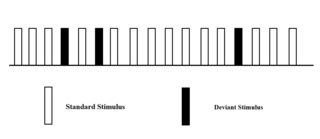
The oddball paradigm is an experimental design used within psychology research. The oddball paradigm relies on the brain's sensitivity to rare deviant stimuli presented pseudo-randomly in a series of repeated standard stimuli. The oddball paradigm has a wide selection of stimulus types, including stimuli such as sound duration, frequency, intensity, phonetic features, complex music, or speech sequences. The reaction of the participant to this "oddball" stimulus is recorded.

Luke Jerram is a British installation artist. He creates sculptures, and large artwork installations, and live arts projects.

The neuroscience of sleep is the study of the neuroscientific and physiological basis of the nature of sleep and its functions. Traditionally, sleep has been studied as part of psychology and medicine. The study of sleep from a neuroscience perspective grew to prominence with advances in technology and the proliferation of neuroscience research from the second half of the twentieth century.
References
- ↑ Touring schedule 2008-09 Archived March 25, 2009, at the Wayback Machine
- ↑ A specially modified REM Dreamer
- ↑ Paul Bignell, "The stuff of dreams", The Independent, 23 November 2008, retrieved 9 December 2008.
- 1 2 Juliet Rix, "The big sleep experiment", The Times, July 7 2007, retrieved 9 December 2008.
- ↑ As described by participants in the short film by Kate Taunton Archived March 25, 2009, at the Wayback Machine